Thoracic Outlet Syndrome (TOS)
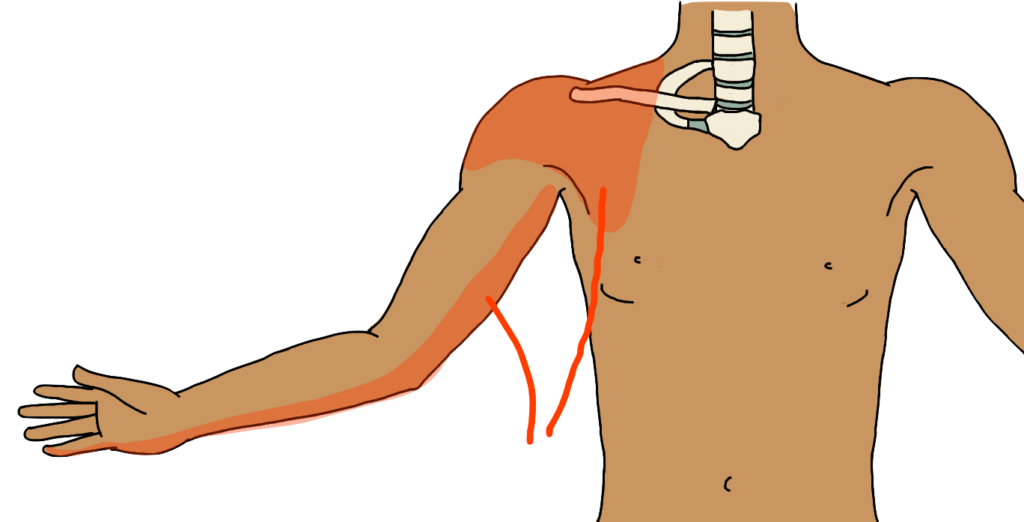
Thoracic Outlet Syndrome (TOS)
Thoracic outlet syndrome (TOS) is a condition that affects the nerves and blood vessels in the arm. Symptoms can include pain, numbness, tingling, weakness, and swelling. TOS can be caused by several things, including injury, repetitive movements, or compression of the nerves and blood vessels in the neck and shoulder area. If left untreated, TOS can lead to serious complications. This guide will provide you with everything you need to know about thoracic outlet syndrome.

Types of Thoracic Outlet Syndrome (TOS)
There are three types of Thoracic Outlet Syndrome:
1. Neurogenic Thoracic Outlet Syndrome
Neurogenic TOS is caused by compression of the nerves in the thoracic outlet. Symptoms may include pain, numbness, tingling, and weakness in the arm and hand.
2. Venous Thoracic Outlet Syndrome
Venous TOS is caused by compression of the veins in the thoracic outlet. Symptoms may include pain, swelling, and discoloration of the arm.
3. Arterial Thoracic Outlet Syndrome
This type of TOS is caused by compression of the arteries in the thoracic outlet. Pain, numbness, tingling, and loss of strength in the arm and hand are all possible symptoms.. Arterial TOS can also lead to stroke or arterial rupture.
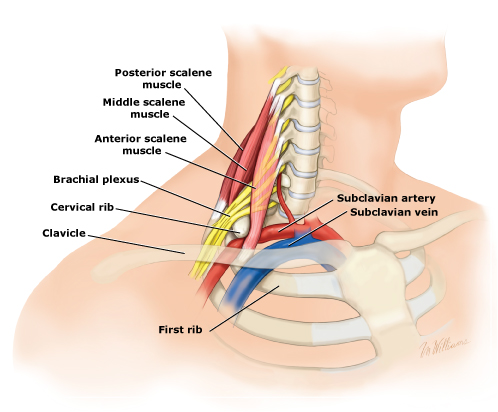
Causes of Thoracic Outlet Syndrome (TOS)
The most common cause of TOS is compression of the brachial plexus and blood vessels in the thoracic outlet. This can happen due to a variety of reasons, including:
– Poor posture
– Slouching
– Wearing tight clothing
– Carrying heavy bags or purses
– Being overweight
– Pregnancy
– Trauma to the neck or shoulder
In some cases, TOS may be caused by a congenital (birth) defect, such as an extra rib. This is known as cervical rib syndrome. Other causes of TOS include tumors, inflammation, and injury.
Symptoms of Thoracic Outlet Syndrome (TOS)
There are many symptoms of Thoracic Outlet Syndrome (TOS). The most common symptom is a pain in the shoulder and neck area. The pain may be a dull ache, or it may be sharp and shooting. The pain may also radiate down the arm and into the hand. Other symptoms include numbness in the arm and hand, weakness in the arm, and tingling in the fingers. TOS can also cause headaches.
The symptoms of TOS vary from person to person and depend on the severity of the condition. Some people only have mild symptoms, while others may have more severe symptoms. Symptoms may also come and go, or they may be constant.
If you think you may have TOS, it is important to see a doctor so that the condition can be diagnosed and treated.
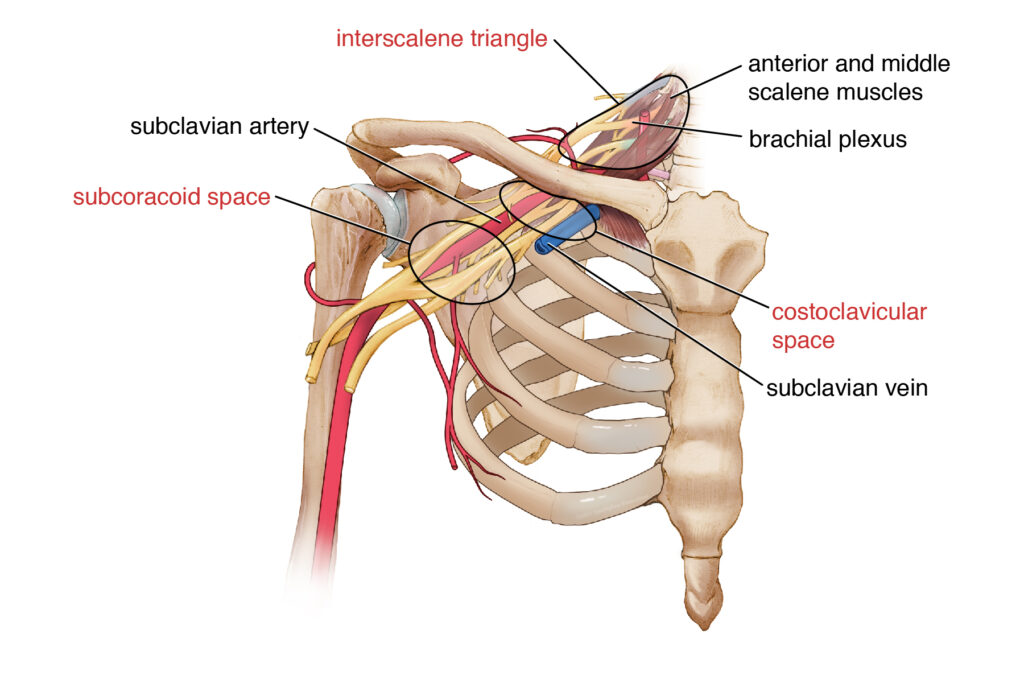
Diagnosis of Thoracic Outlet Syndrome (TOS)
There are different ways to diagnose TOS. The most common way is through a physical examination. Your doctor will check for physical signs of TOS, such as:
* Swelling in your arms
* Weakness in your muscles
* Numbness or tingling in your fingers
* Pain in your neck, shoulder, or arm
Your doctor may also ask you to do some special tests, such as:
* An X-ray of your neck and shoulder
* A CT scan or MRI of your neck and shoulder
* An electromyogram (EMG) to check the health of your nerves
You may need to see a specialist for a diagnosis. A specialist is a doctor who has a lot of experience with TOS.
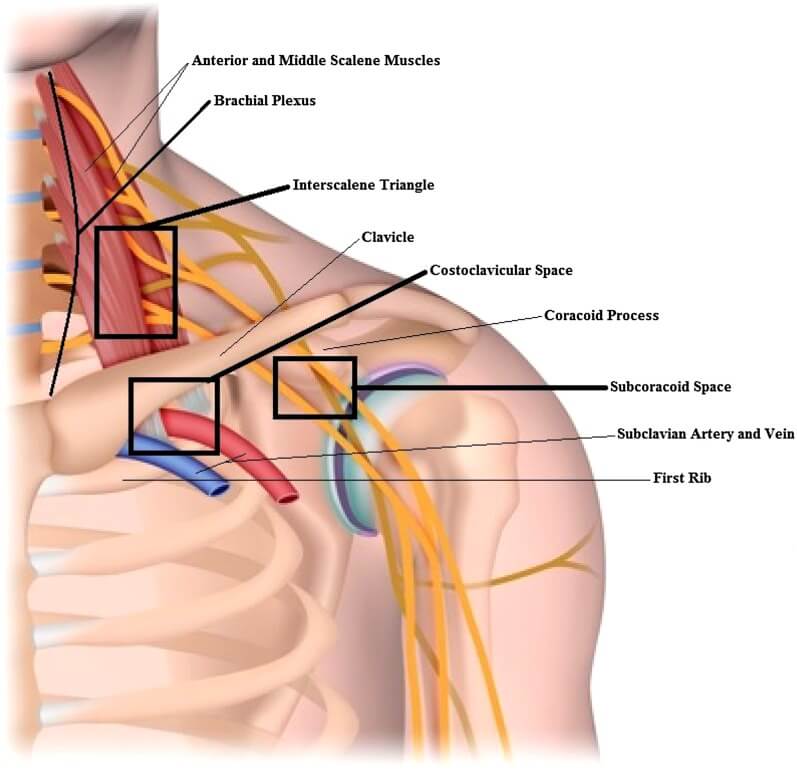
Treatment of Thoracic Outlet Syndrome (TOS)
There are multiple treatment options available for thoracic outlet syndrome (TOS). The course of treatment will vary depending on the severity of symptoms and underlying cause of TOS. Many people with TOS will require a combination of treatments to find relief.
Physical Therapy:
The most conservative approach to treating TOS is typically a trial of physical therapy and Occupational Therapy. Physical therapy can help to improve the range of motion and strengthen the muscles around the shoulder and neck. This can help to ease arm pain and prevent further injury. Occupational therapy can teach patients how to modify their daily activities to avoid aggravating symptoms.
Surgery:
If physical therapy and occupational therapy do not improve symptoms, or if the symptoms are severe, surgery may be recommended. The goal of surgery is to relieve pressure on the nerves and blood vessels in the thoracic outlet.
There are several different types of surgery that can be performed for Arterial or Venous Thoracic Outlet Syndrome. The type of surgery will depend on the underlying cause of Venous or Arterial TOS.
Cervical rib resection:
This surgery is performed to remove an extra rib that is pressing on nerves or blood vessels.
First rib resection:
This surgery is performed to remove a part of the first rib that is pressing on nerves or blood vessels.
Splenectomy:
This surgery is performed to remove a muscle in the neck that is pressing on nerves or blood vessels.
Thoracic outlet decompression:
This surgery is performed to relieve pressure on the nerves in the thoracic outlet.
After surgery, you will likely need physical therapy to help improve range of motion and strengthen the muscles around the shoulder and neck.
Thoracic outlet syndrome can be a debilitating condition, but there are many effective treatments available. With the help of a medical team, you can find relief from your symptoms and live a normal, healthy life
Complications and Risks with Thoracic Outlet Syndrome (TOS)
There are several potential complications and risks associated with thoracic outlet syndrome. These include:
– Nerve damage: Compression of the nerves in the thoracic outlet can lead to damage of the nerves. This can cause pain, numbness, tingling, and weakness in the affected area.
– Blood vessel damage: Compression of the blood vessels in the thoracic outlet can limit or cut off blood flow to the area. This can cause tissue death and other serious problems like blood clots.
– Thoracic outlet syndrome is often misdiagnosed or ignored. This can delay treatment and allow the condition to worsen.
– Thoracic Outlet Decompression Surgery is the most common treatment for the condition, but it is not always successful. Additionally, surgery carries its own risks, such as infection, bleeding, and nerve damage.
If you think you may have thoracic outlet syndrome, it is important to see a doctor so that the condition can be properly diagnosed and treated. While TOS is not usually a serious condition, it can cause pain and disability. Additionally, if left untreated, TOS can lead to more serious complications. Therefore, it is important to seek medical attention if you think you may have TOS.
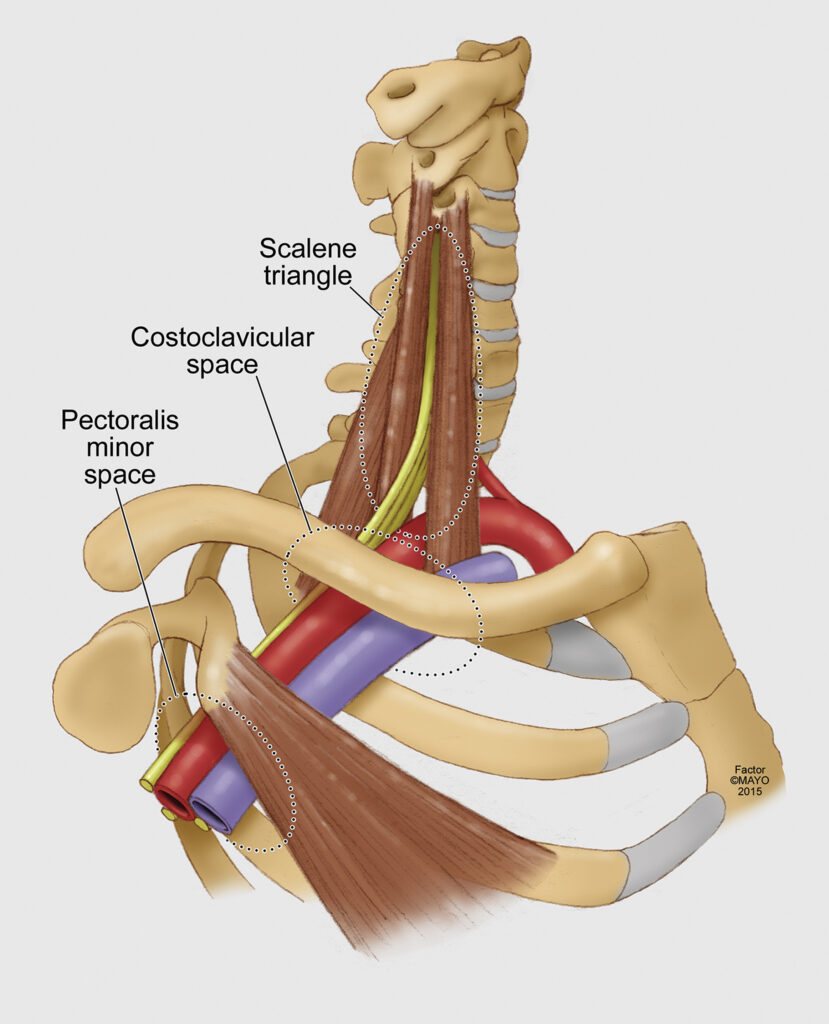
Preventive Measures for Thoracic Outlet Syndrome (TOS)
There are many preventive steps you can take to avoid thoracic outlet syndrome (TOS). Some of these steps are:
1. Maintain good posture.
Poor posture can contribute to TOS by putting extra pressure on the nerves and blood vessels in your neck and shoulders.
2. Use ergonomic devices.
If you work at a computer or perform other activities that require you to be in the same position for long periods, using ergonomic devices can help reduce the risk of TOS.
3. Avoid repetitive motions.
Repeating the same motions over and over again can strain the muscles and nerves in your neck and shoulders, leading to TOS.
4. Maintain a healthy weight.
Excess weight can put extra pressure on the nerves and blood vessels in your neck and shoulders, leading to TOS.
5. Exercise regularly.
Staying active helps keep the muscles in your neck and shoulders strong and healthy, which can help prevent TOS.
6. Stretch daily.
Stretching the muscles in your neck and shoulders can help prevent TOS.
7. Wear comfortable shoes.
Wearing high heels or other shoes that don’t provide adequate support can contribute to TOS.
If you’re already experiencing symptoms of TOS, there are also several treatment options available. Treatment for TOS typically focuses on relieving the pressure on
Risk Factors for developing Thoracic Outlet Syndrome (TOS)
Thoracic outlet syndrome can affect anyone, but it is most commonly seen in women between the ages of 20 and 50. It is also more common in people who have a family history of the condition. Thoracic outlet syndrome is seen more often in people who work in jobs that require them to repetitively use their arms or who participate in activities that put repetitive stress on their shoulders, such as weightlifting or rowing.
While the condition can occur in anyone, nerve conduction studies show that certain risk factors may make it more likely. These include:
– Having a family history of thoracic outlet syndrome
– Being a woman between the ages of 20 and 50
– Participating in activities that put repetitive stress on the shoulders
– Working in a job that requires the use of the arms
Thoracic outlet syndrome is a condition that should be taken seriously, as it can lead to serious complications if left untreated. If you think you may be suffering from thoracic outlet syndrome, please see a doctor as soon as possible.
Frequently Asked Questions about Thoracic Outlet Syndrome (TOS)
Thoracic outlet syndrome (TOS) is a group of disorders that occur when there is compression of the nerves and/or blood vessels in the space between the collarbone and first rib. This can cause pain in the shoulders and neck, as well as numbness and tingling in the arms and hands.
The most common symptom of TOS is pain in the shoulder or neck. This pain may radiate down the arm to the hand. Other symptoms may include numbness, tingling, weakness, or muscle atrophy in the arm or hand.
There are several possible causes of TOS. These include:
-A birth defect that results in a small space for the nerves and blood vessels to pass through
-An injury to the shoulder or neck
-Repetitive motions of the arm and shoulder, such as those often seen in athletes or manual laborers
To diagnose Thoracic Outlet Syndrome, one has to look at the symptoms of the condition. A physical examination may be done to check for signs of TOS. Imaging tests, such as an MRI or CT scan, may also be ordered to look for any narrowing of the space between the collarbone and first rib.
The treatment of TOS depends on the severity of the condition. In some cases, conservative measures, such as rest, ice, and physical therapy, may be all that is needed. In more severe cases, surgery may be necessary to relieve the pressure on the nerves and/or blood vessels.
A TOS test is a diagnostic test used to determine if someone has thoracic outlet syndrome. The most common type of TOS test is an MRI or CT scan. These imaging tests can help to show if there is any narrowing of the space between the collarbone and first rib.
3 Ways to Level Up Your Rehab and Injury Prevention With Us





